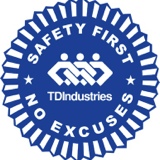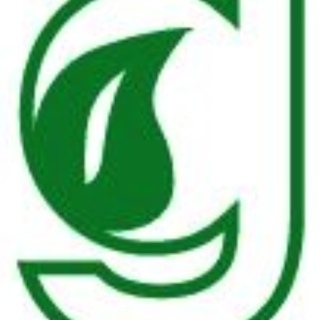Information
-
Audit Title
-
Client / Site
-
Conducted on
-
Prepared by
-
Location
-
Personnel
1. Fall Protection
-
1.1. Fall protection in place for workers working above 6 feet?
-
1.2. Workers tied off working above 6 feet?
-
1.3. Leading edge protection in place? (Guard rails, handrails)
-
1.4. Unsafe or incomplete edge protection?
-
1.5. Floor holes and openings covered and labeled "Hole"?
-
1.6. Guard rails in place and in good shape?
-
1.7. Impalement caps in place?
2. Equipment and Tools
-
2.1. Unsafe or damaged equipment tagged "Out of Service"?
-
2.2. Correct equipment or tool for job?
-
2.3. Unsafe or incompatible attachments used with equipment?
-
2.4. Lack of safe work instructions?
-
2.5. Lack of training in safe operation, clean-up and maintenance?
-
2.6. Inspection complete?
3. Scaffolds
-
3.1. Unsafe or incomplete scaffold tagged "Out of Service"?
-
3.2. Inspection complete and scaffold tagged?
-
3.3 Competent person present during scaffold erecting and dismantle?
-
3.4. Safe Work Load (SWL) exceeded? (tools, stored materials, number of persons)
-
3.5. All pins in place and locked?
-
3.6. Wheels locked while worker is on scaffold?
-
3.7. Outriggers in place, if needed?
-
3.8. Is Toe-Board installed at working heights of 10 feet or more?
4. Forklift, Lull, Power Industrial Truck, Skid Steer, Bobcat, Back Hoe, Dirt Loader, Boom/Aerial Lift
-
4.1. Unsafe or damaged equipment tagged "Out of Service"?
-
4.2. Loads lifted over persons, close proximity to obstacles incl. overhead power lines?
-
4.3. Lack of maintenance?
-
4.4. Daily inspection complete?
-
4.5. Unsafe or damaged lifting equipment, including ropes, slings, chains, hooks?
-
4.6. Lifting equipment unlabelled or missing tags?
-
4.7. Licensed operators?
-
4.8. Operator wearing seatbelt?
-
4.9. Fire Extinguisher on equipment?
5. Personal Fall Arrest System (Full Body Harness w/ lanyard)
-
5.1. Unsafe or damaged harness or equipment tagged "Out of Service"?
-
5.2. Incompatible hooks/equipment?
-
5.3. Unlabelled or does not meet ANSI standards?
-
5.4. Unsafe or uncertified anchor points?
-
5.5. Inspection of equipment complete?
-
5.6. Lack of or inadequate formal training for operators?
6. Ladders
-
6.1. Unsafe or damaged ladders tagged "Out of Service"?
-
6.2. All warning labels and/or stickers in place?
-
6.3. Ladder properly secured at top and bottom?
-
6.4. Ladder suitable for job?
-
6.5. Ladder being used to manufacture spec?
-
6.6. Ladder extended 3 feet above the landing?
7. Handling hazardous materials
-
7.1. Lack of hazardous identification signage?
-
7.2. Lack of assessment of hazardous material?
-
7.3. Lack of training in handling hazardous materials?
8. Hazardous Chemicals (including fuel and oil)
-
8.1. Unsafe storage location? (e.g. flammables near ignition sources, spills could enter stormwater drains, etc)
-
8.2. Incompatible chemicals stored near each other?
-
8.3. Adequate spill containment equipment?
-
8.4. Safety Data Sheets (SDS) accessible on site?
-
8.5. Lack of emergency procedures for injury/spills/fire etc?
-
8.6. Excessive quantities stored on site or in vehicles?
-
8.7. Insufficient ventilation?
-
8.8. Insufficient, or incorrect, PPE?
-
8.9. Unsuitable storage containers? (unlabeled or stored in food containers)
9. Emergency Response
-
9.1. Emergency plan for site understood by all workers?
-
9.2. Emergency procedures displayed at site?
-
9.3. Lack of training and rehearsal of emergency plans?
-
9.4. AED on site?
-
9.5. First Aid kit on site and accessible?
-
9.6. Unsuitable or inadequate communication equipment?
10. Traffic Management
-
10.1. Lack of, or inadequate, Traffic Management Plan (TMP) in place?
-
10.2. Lack of training in TMP for all persons on site? <br>(contractors and visitors)
-
10.3. Inadequate controls for TMP? (physical barriers, bollards, speed limits, flashing lights, spotters, etc)
11. Personal Protective Equipment (PPE)
-
11.1. Z87 rated Safety glasses being worn?
-
11.2. Hard hat being worn and worn properly?
-
11.3. Reflective vest or high visibility shirt being worn?
-
11.4. Gloves being worn while working?
-
11.5. Cut Resistant gloves being worn while handling sharp edges?
-
11.6. Does worker have on Steel-toe boots?
-
11.7. Is worker using Face Shield while cutting, chipping, grinding, welding, brazing, etc?
-
11.8. Hearing protection being worn when needed?
12. Work Environment
-
12.1. Lack of/or inadequate amenities? (toilets, wash areas, lunch rooms, etc)
-
12.2. Sufficient lighting?
-
12.3. Adequate housekeeping?
-
12.4. Lack of, or inadequate noise/ vibration control?
-
12.5. Proper Ventilation?
-
12.6. Heat Stress?
-
12.7. Cold Stress?
-
12.8. Congested work area?
-
12.9. Drinking Water provided for workers?
13. Electrical Hazards
-
13.1. Unsafe electrical leads tagged "Out of Service"?
-
13.2. GFCI protection in place?
-
13.3. Contact with underground electrical lines?
-
13.4. Contact with overhead electrical lines?
-
13.5. Leads placed on ground protected from sharpe edges?
-
13.7. Electrical equipment near water?
-
13.8. Electrical equipment near flammables?
-
13.9. Electrical equipment near chemicals that could cause damage?
-
13.10. Electrical leads on work surfaces?
-
13.11. Electrical leads that may be damaged from contact with moving machinery parts?
-
13.12. Lack of Lock-out/tag-out (LOTO) procedures for electrical equipment?
14. Environmental Hazards
-
14.1. Lack of/or inadequate Environmental Management plan (EMP)?
-
14.2. Lack of/or inadequate systems to prevent contaminants entering stormwater drains?
-
14.3. Bad Weather?
-
14.4. Lack of/or inadequate, dust suppression system?
-
14.5. Silt fence installed and maintained?
-
14.6. Unstable ground?
15. Confined Space
-
15.1. Has work area been evaluated?
-
15.2. Does the working space meet all 3 criteria to make it a confined space?
-
15.3. Does this confined space meet the requirements for a permit required confined space?
16. Fire Protection/Fire Prevention
-
16.1. Fire Extinguisher within 100 feet of foot travel?
-
16.2. Sprinkler system up and active?
-
16.3. Smoke detectors covered while spraying, sweeping, dusting, painting?
-
16.4. Pull stations live and active?
-
16.5. Flammable liquids stored in proper fuel containers?
-
16.6. Fire Extinguisher within 25 feet of fuel storage containers?
-
16.7. "No Smoking" signs posted next to flammables?
-
16.8. Fire Extinguisher present while "Hot Work" is being preformed?
17. Excavation and Trenching
-
17.1. Soil type?
-
17.2. Is Excavation deeper than 4 feet?
-
17.3. Air Quality checked at 4 feet deep and recorded?
-
17.4. Proper Ladder access and egress within 25 feet?
-
17.5. Excavation or Trench properly benched/sloped?
-
17.6 Competent person present during excavation or trenching?
-
17.7 Soil pile 2 feet from edge of excavation?
18. Cranes
-
18.1. Crane on site?
-
18.2. Crane operator certified? If yes, need copy of training for records.
-
18.3. Medical evaluation been done? If yes, need copy of report for records.
-
18.4. Inspection completed and documented? If yes, need copy for records.
-
18.5. Certified Signal Man on site? If yes, need copy of training for records.
-
18.6. Certified Rigger on site for lift? If yes, need copy of training for records.
-
18.7. Tag line(s) being used during lift?
-
18.8. Barricades in place around Crane?
-
18.9. Is area beneath load clear?
-
18.10 Crane minimum distance from overhead power lines?
19. Rigging Equipment
-
19.1. Synthetic Webbing Sling Inspections complete?
-
19.2. Wire Rope Sling Inspections done?
-
19.3. Slings have load capacity tags?
-
19.4. Hooks and shackles inspections complete?
-
19.5. Chain fall/Chain Hoist inspection complete?
-
19.6. Unsafe or damaged equipment tagged "Out of Service"?
20. Housekeeping
-
20.1. Work area clean?
-
20.2. Trash tossed away in the proper receptacle?
-
20.3. Floors swept?
-
20.4 Material stacked up and organized?
21. Evacuation and Take Shelter Plan
-
21.1. Do all workers know the alarm sequence?
-
21.2. Do all workers know where the nearest rally point is?
-
21.3. Is there proper access to and egress from the building and/or job?
22. Respiratory Protection
-
22.1. Can hazard be avoided or engineered out to avoid the use of a Respirator?
-
22.2. Is worker wearing a NIOSH approved Respirator?
-
22.3. Did worker volunteer to wear Respirator?
-
22.4. Has worker been fit tested on the Respirator they are using?
-
22.5. Has worker been through medical evaluation? If yes, turn in documents to Safety Department.
23. JSTA’s (Job Safety Task Analysis)
-
23.1. Completed daily before the start of work?
-
23.2. Filled out correctly?
-
23.3. All crew members involved in task have signed JSTA?
Corrective Actions
-
Enter any corrective actions that will be undertaken
Sign Off
-
On site representative
-
Safety Manager's signature











